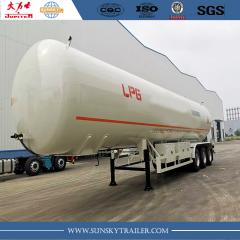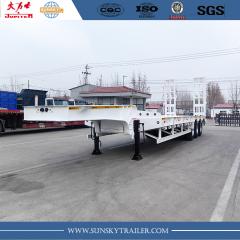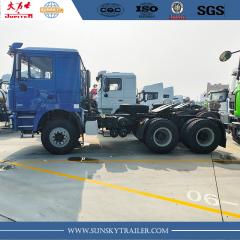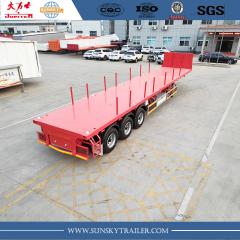-
 3 Axle Lpg Gas Tank Semi Trailer
3 Axle Lpg Gas Tank Semi Trailer
-
 Low Bed Trailer
Low Bed Trailer
-
 SHACMAN F3000 Tractor Truck
SHACMAN F3000 Tractor Truck
-
 Flatbed Pillar Trailer
Flatbed Pillar Trailer
SUNSKY VEHICLE, a manufacturer of flatbed semi-trailers, has found that the Flatbed Pillar Trailer i...
For long-distance road transport of oversized and abnormal cargo, modular trailers, also known as multi-axle trailers and hydraulic platform trailers are used. To create high-end products, manufacturers rely on their machinery. The manufacturing industry is now defined by technology.
The best gear, on the other hand, is typically bulky and heavy. Companies are constantly looking to invest in the most advanced manufacturing technology, but transportation is a major roadblock. It's difficult to transport 5,000-ton equipment from one location to another. Normal trucks and semi-trailers will not be able to transport it.
What Are the Benefits of Using a Modular Trailer?
It's all due to the way it's designed to handle such a large amount of weight. Axles run along and across the main loading frame of a typical self-propelled modular trailer.
The axles are placed side by side to form an axle line, and they are controlled by a computer. The capacity of an SPMT is determined by its structure and brand. They are specifically designed to transport heavy cargo.
Some modular transporters have only a few axle lines, while others have up to 300 axle lines. One of the characteristics that distinguish the use of a modular trailer is this.
The lifting and transportation of the heaviest loads are possible thanks to the modular trailer capacity. As a result, a self-propelled modular trailer is the best option for transporting 5000-ton equipment.
You can either buy or rent a modular trailer depending on the size of your job and how frequently you require such services. Modular trailers are capable of transporting loads that appear to be impossible to transport.
Advantages
Modular trailers have advantages over traditional trailers in that they can perform functions that other trailers cannot. A modular trailer should, in theory, have a variety of apparatus built into it.
It could have a bed attached to a frame of a specific width and length. A transportation conveyance that reaches the ground surface and another that does the same but is attached to the opposite sides of the mainframe are among the other apparatus.
A towing arm with a bed element freely coupled to a tow element may be included in the modular trailers' apparatus.
The tow element could be attached to a coupler on the trailer that is configured to securely attach to ball hitches or any other hitch, and the bed could be attached to the trailer frame.
For additional embodiments, the two elements may be freely attached to the trailer bed between a retracted and extended position.
All of these features make a modular trailer useful for transporting large, extra-long, and super-heavy cargo in the construction, electromotive force, metallurgy, chemical, and logistics industries, among others
While in transit, the suspension hydraulic trailer loading platform type is kept balanced to safely secure the load in place on a bumpy road. It has excellent damping properties, which ensures that cargo is transported smoothly.
The trailer's brace kit can achieve a 3-4 point brace, ensuring that the load for each of the points is the same and eliminating a partial set.
A solid box beam framework is used for the trailer's main supporting elements. High-performance welding steel is used for the key frame longitudinal girder, trailer platform, steering arm, and bogie frame.
Full-trailer and semi-trailer towing are both possible with a series modular trailer. The maximum speed in full-trailer towing mode is 40 kilometers per hour, and in this state, this towing format can obtain the maximum tractive force, which is particularly useful in heavy-duty cargo transportation that requires low speed.




